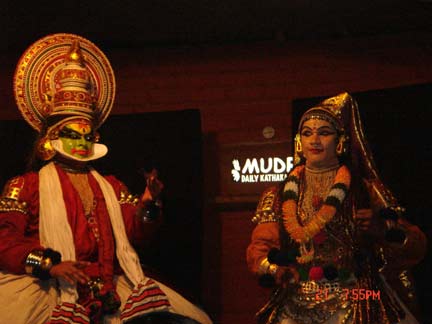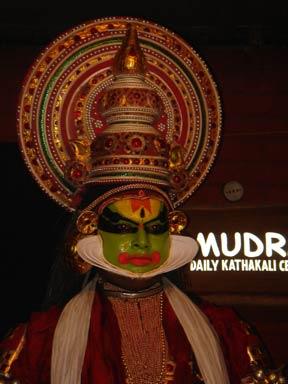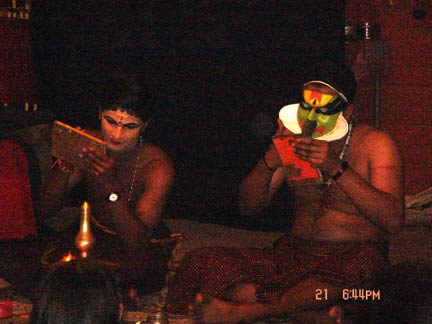
I recently had an opportunity to witness the Kathakali performance in Kerala. I was much excited about it. Upon entering the theater, everyone was given a piece of paper which described the storyline of the play. Before the show they demonstrated the artists’ makeup and different hand gestures and facial expressions. Thereafter the actual play began. I was simply amazed by the intricate makeup and heavy costumes the artists were clad in. It was awesome! I was elated by the facial expressions, eye movements and hand gestures. Just amazing! I could imagine the amount of training and practice the artists must have undergone to showcase such a skillful and artistic performance.
Kathakali is the classical dance form of Kerala, India with its origin dating back to the 17th century. Kathakali, literally meaning ‘story-play’, is a dance-drama, known for its elaborate makeup and costumes. The elaborate costumes of Kathakali have become the most recognized icon for Kerala.
Kathakali is an integral part of all the temples in Kerala. The makeups are ornate, intricate and designed to give super human effect. The actors do not speak or sing but enact the story through elegant and graceful movements and facial expressions.

A Kathakali performance is a major social event. It generally starts in the evening and continues through out the night. Kathakali is usually performed only by men. Female characters are portrayed by men clad in women’s costumes. However, in recent years, women have started performing in the Kathakali programs.
Kathakali is a harmonious blend of five forms of the fine art:
- Sahithyam, the literature
- Sangeetham, the music
- Chithram, the painting
- Natyam, the acting
- Nrithyam, the dance
The themes for Kathakali are spiritual in nature. They typically deal with the Mahabharata, the Ramayana and the Puranas (the ancient Indian scriptures). The language used is generally Sanskritised Malayalam.
The music of Kathakali has some similarity to Carnatic Sangeet, the larger body of South Indian classical music. However the instrumentation is distinctly different, which is accomplished by the use of instruments such as chenda, idakka, and shuddha madalam.
 One of the distinguishing features of Kathakali is the absence of oral communication. A significant part of the script is in the form of lyrics, sung by vocalists.
One of the distinguishing features of Kathakali is the absence of oral communication. A significant part of the script is in the form of lyrics, sung by vocalists.
Although dance is an important element in Kathakali, it is not the main feature. Pure dance sequences are limited to Kalasams, which punctuate acting segments.
The communication among the characters and to the audience is through an intricate language of hand gestures, used in combination with facial expressions and body movements. The hand gestures, known as Mudra, are common through out much of Indian classical dance.
The costume is the most distinctive characteristic of Kathakali. The makeup is very elaborate and the costumes are very large and heavy. The makeup, called Chutty in the bibliography of Kathakali, is an art form in itself. The colorful faces are the result of hours of painstaking handiwork by expert artists. The colors used for makeup are all natural. No artificial ingredients are used. There are several kinds of characters like Sathwika (the hero), Kathi (the villain), Minukku (females), and Thatti. Each character is instantly recognizable by their makeup and costume.
The photograph below shows the artists demonstrating the makeup just before the actual show.

I totally enjoyed the show. It was wonderful!! If you ever go to Kerala, which you must visit at least once, I would say you must not miss this opportunity to witness Kathakali. Kerala has many Kathakali centers that host daily performances especially for tourists. A typical show contains two parts – the first part demonstrates artists’ makeup and different dance gestures and expressions; while the second one shows the actual story play.